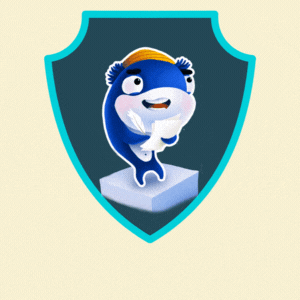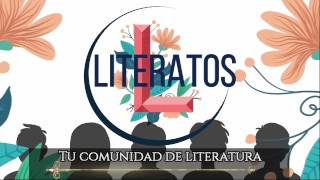Descubrí a Egon Schiele, someramente, en mis iniciales visitas a la plástica moderna. Pero fue un filme de 1981, Exceso y castigo, en la traducción al español, el que me lo presentó de un modo que atrapó radicalmente mi interés. Hay un filme más reciente, pero que no he visto, de 2016, sobre él (ver esta referencia).

Fuente | Source - Dominio público | Public Domain
Como se puede leer en la referencia facilitada, Egon Schiele fue un pintor de origen austríaco, nacido el 12 de junio de 1890, de muy corta vida: falleció a los 28 años, al contagiarse con la pandemia del 1918 (la conocida como "gripe española"), que también mató a su esposa. Se le inscribe como representante del expresionismo, pero la relevancia de su obra va más allá de cualquier rótulo artístico.
Quise honrarlo y difundirlo por medio de una microficción, elaborada como si se tratara de un diálogo entre Franz Pfemfert, director de la revista Die Aktion, quien realmente le dedicara atención al artista, y Egon Schiele (de ahí las abreviaturas).

Fuente | Source - Dominio público | Public Domain
F. Pfemfert: Sus dibujos y grabados rondan casi todos en torno a retratos y desnudos femeninos. En ambos casos, las figuras aparecen algo distorsionadas.
E. Schiele: Sí, hay una búsqueda propia que quiere alejarse del naturalismo y de una estética convencional. Quisiera expresar esa tensión interna, dramática, que nos realiza como existencias. Y me gusta mirar en los otros eso, que también está en mí; por eso esos autorretratos, donde también me deformo.
F. P: ¿Y los desnudos?
E. S: Desde muy joven me dejé llevar por la atracción hacia el cuerpo femenino, por su expresión libre, lejos del falso pudor, en su manifestación del placer y del dolor, casi con la pureza que precede al pecado.

Fuente | Source - Dominio público | Public Domain
F. P: Eso le costó la discriminación, ser calificado de pornográfico, incluso la prisión.
E. S: Hemos sido atenazados durante años por una moralina burguesa, de falsos e hipócritas valores. Ahí están los poemas y novelas de finales del siglo que lo denuncian. Yo simplemente he querido expresar la belleza del cuerpo femenino en su natural extrañeza, en las apariencias y posiciones que este puede asumir, con toda su sensualidad y soledad. Es un erotismo quizás duro, pero franco.

F. P: Recuerdo aquella frase suya: "¡La obra de arte erótica también tiene santidad!"
E. S: Así es, el cuerpo es sagrado, es la morada del hondo espíritu de la naturaleza en el hombre, aunque muchas veces se ha querido renegar de él. Él es con sus pliegues, orificios, protuberancias, excrecencias, deformidades...
F.P: ¿De dónde le viene su técnica?
E. S: Hubo varios maestros en mi formación; uno de ellos, Gustav Klimt. A él le debo mucho, tanto su atención al cuerpo, como ese modo de trabajar las líneas. Yo hice mi propio camino, pero sus líneas estuvieron siempre en mí, aunque fueran las líneas nerviosas, casi enfermas, de mi rebelde cuerpo y alma.

F. P: A propósito, y volviendo atrás... ¿Ha vivido usted la angustia existencial, esa de la que han hablado los filósofos?
E.S: No sé si pueda llamarse así a lo que me acompaña desde mi infancia. Somos un extraño compuesto de pérdidas, develaciones y tormentos. La muerte temprana de mi padre, las durezas de la adolescencia y juventud, las incomprensiones y discriminaciones de mi arte, la pérdida de amadas mujeres y de amigos. Sobre todo, el afrontamiento de un mundo dado muchas veces a la atrocidad, aunque esté camuflada de bien y moral.
![Click here to read in english]
Nude provocation (microfiction for the painter Egon Schiele)
I discovered Egon Schiele briefly in my initial visits to modern art. But it was a 1981 film, Excess and punishment, in the Spanish translation, that introduced it to me in a so that radically caught my interest. There is a more recent film, but that I have not seen, from 2016, about him (see this reference).
As can be read in the reference provided, Egon Schiele was a painter of Austrian origin, born on June 12, 1890, with a very short life: he died at the age of 28, when he was infected with the 1918 pandemic (known as the "flu Spanish"), who also killed his wife. He is registered as a representative of expressionism, but the relevance of his work goes beyond any artistic label.
I wanted to honor him and disseminate him through a microfiction, prepared as if it were a dialogue between Franz Pfemfert, director of the magazine Die Aktion, who really dedicated him attention to the artist, and Egon Schiele (hence the abbreviations).
F. Pfemfert: his drawings and engravings almost all revolve around portraits and female nudes. In both cases, the figures appear somewhat distorted.
E. Schiele: Yes, there is a personal search that wants to move away from naturalism and conventional aesthetics. I would like to express that internal, dramatic tension that makes us exist. And I like to look at that in others, which is also in me; That's why those self-portraits, where I also deform myself.
F. P: And the nudes?
E. S: From a very young age I let myself be carried away by the attraction towards the female body, by its free expression, far from false modesty, in its manifestation of pleasure and pain, almost with the purity that precedes sin.
F. P: That cost him discrimination, being described as pornographic, even prison.
E. S: We have been gripped for years by a bourgeois morality, with false and hypocritical values. There are the poems and novels from the end of the century that denounce it. I simply wanted to express the beauty of the female body in its natural strangeness, in the appearances and positions that it can assume, with all its sensuality and loneliness. It is perhaps a harsh, but frank eroticism.
F. P: I remember that phrase of yours: "The erotic work of art also has sanctity!"
E. S: That's right, the body is sacred, it is the home of the deep spirit of nature in man, although many times people have wanted to deny it. He is with his folds, orifices, protuberances, excrescences, deformities...
F.P: Where does his technique come from?
E. S: There were several teachers in my training; one of them Gustave Klimt. I owe a lot to him, both his attention to the body and that way of working the lines. I made my own path, but his lines were always in me, even if they were the nervous, almost sick lines of my rebellious body and soul.
F. P: By the way, and going back... Have you experienced existential anguish, the one that philosophers have talked about?
E.S: I don't know if you can call that what has been with me since my childhood. We are a strange compound of losses, revelations and torments. The early death of my father, the hardships of adolescence and youth, the misunderstandings and discrimination of my art, the loss of beloved women and friends. Above all, confronting a world often given to atrocity, even if it is camouflaged as good and moral._
Referencias | References:
https://es.wikipedia.org/wiki/Egon_Schiele
https://en.wikipedia.org/wiki/Egon_Schiele
https://www.wikiart.org/es/egon-schiele








